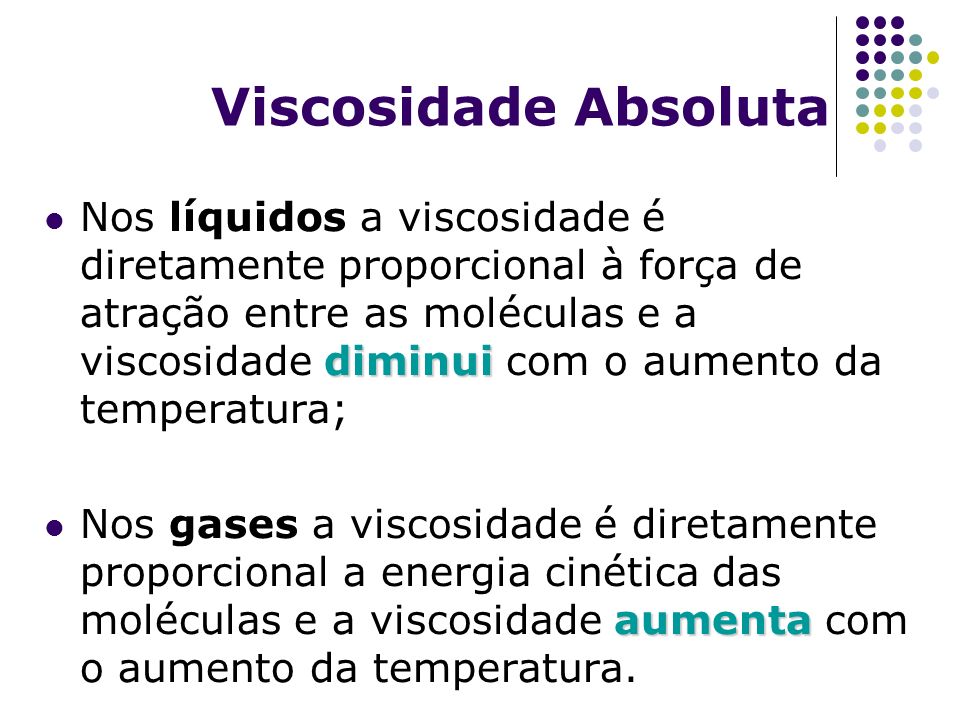

Although it applies to general flows, it is easy to visualize and define in a simple shearing flow, such as a planar Couette flow. Viscosity is the material property which relates the viscous stresses in a material to the rate of change of a deformation (the strain rate). For instance, in a fluid such as water the stresses which arise from shearing the fluid do not depend on the distance the fluid has been sheared rather, they depend on how quickly the shearing occurs. In other materials, stresses are present which can be attributed to the rate of change of the deformation over time. Stresses which can be attributed to the deformation of a material from some rest state are called elastic stresses. For instance, if the material were a simple spring, the answer would be given by Hooke's law, which says that the force experienced by a spring is proportional to the distance displaced from equilibrium. In materials science and engineering, one is often interested in understanding the forces or stresses involved in the deformation of a material. In a general parallel flow, the shear stress is proportional to the gradient of the velocity. A fluid that has zero viscosity is called ideal or inviscid. Zero viscosity (no resistance to shear stress) is observed only at very low temperatures in superfluids otherwise, the second law of thermodynamics requires all fluids to have positive viscosity. For example, the viscosity of a Newtonian fluid does not vary significantly with the rate of deformation. However, the dependence on some of these properties is negligible in certain cases. In general, viscosity depends on a fluid's state, such as its temperature, pressure, and rate of deformation. Kinematic viscosity is dynamic viscosity divided by density (Formula F7.9) and is the ratio of viscous forces to inertia forces. For a tube with a constant rate of flow, the strength of the compensating force is proportional to the fluid's viscosity. This is because a force is required to overcome the friction between the layers of the fluid which are in relative motion.


Experiments show that some stress (such as a pressure difference between the two ends of the tube) is needed to sustain the flow. For instance, when a viscous fluid is forced through a tube, it flows more quickly near the tube's axis than near its walls. Viscosity quantifies the internal frictional force between adjacent layers of fluid that are in relative motion. For liquids, it corresponds to the informal concept of "thickness": for example, syrup has a higher viscosity than water. Desalination 59, 219–240.įor kinematic viscosity Chen et al.The viscosity of a fluid is a measure of its resistance to deformation at a given rate. Experimental methods for determination of the properties of saline water. Physical properties of seawater solutions. With the wide range of answers that you get from repeated lab measurement and/or using various equations, it is generally best to pick a single method and pretend that you believe it-repeatable results will not be available for viscosity measurements.īased on Isdale, J.D., Spencer, C.M., Tudhope, J.S. None of the empirical methods provide results that match field conditions when there is any acid gas in a gas stream, and the equations of state methods are not a lot better for acid gases. The various methods can vary by more than 20% one from the next for the same fluid. It can also be predicted through an equation of state or one of many empirical relationships. Viscosidade cinemática 1000 x (0,000173 poise) / (1.229 kg por metro cúbico) 0,141 stokes Isto significa que, a uma pressão padrão e 15º C de temperatura, a viscosidade dinâmica do ar é, grosseiramente 0,000173 poise, portanto a viscosidade cinemática é de 0,141 stokes. One of the tubes is rotated and the amount of force that it takes to rotate at a fixed angular velocity is proportional to the dynamic viscosity. 4.1.1.1 Dynamic viscosity (μ)ĭynamic viscosity can be determined via an apparatus that has concentric tubes whose annular space can be filled with the fluid under test. Kinematic viscosity can be thought of as resistance to fluid momentum. Dynamic (or absolute) viscosity is an expression of a fluid’s ability to resist shear flows. Viscosity is a measure of the ability of a fluid to resist shear forces. Simpson P.E., in Practical Onshore Gas Field Engineering, 2017 4.1.1 Viscosity


 0 kommentar(er)
0 kommentar(er)
